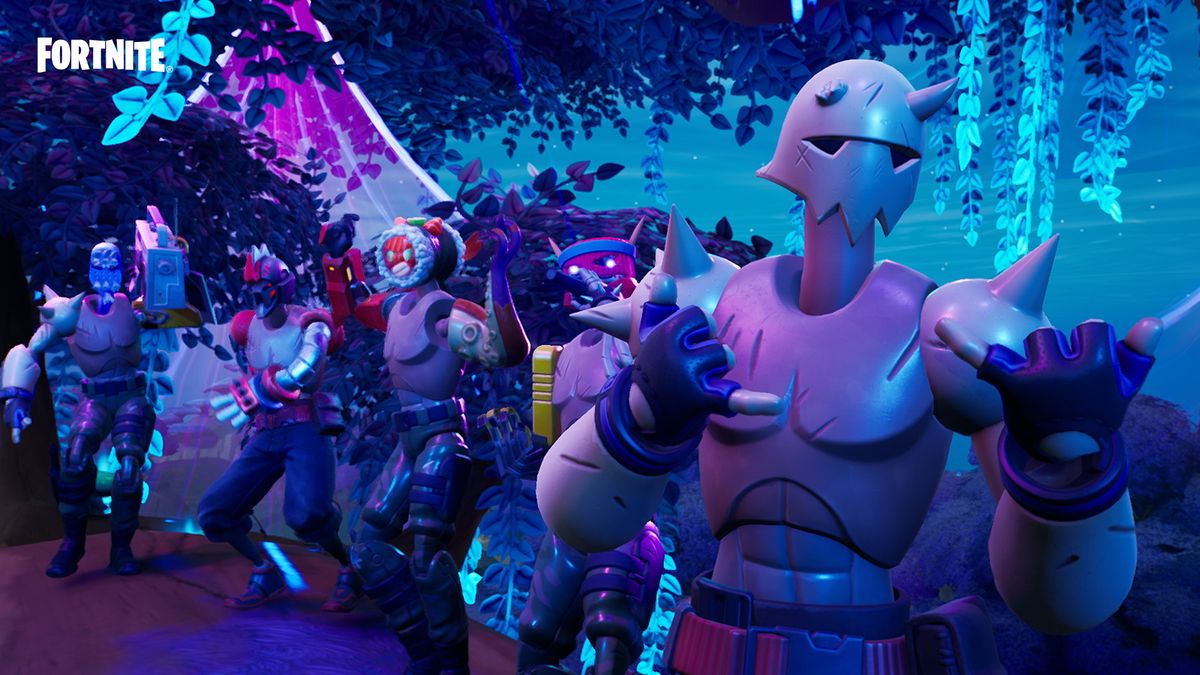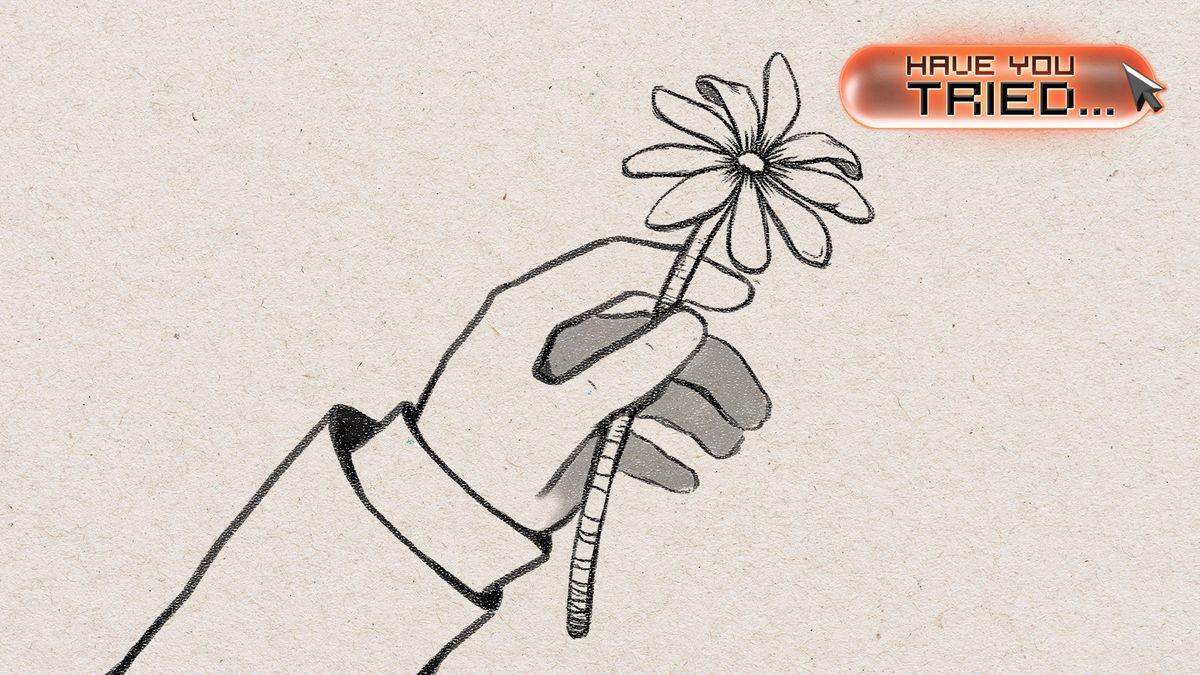“Come in! And know me better, man!” says the Ghost Of Christmas Present to Scrooge in the second act of A Christmas Carol. Entering the living room, Scrooge discovers a jolly giant, wreathed in green and surrounded by blazing candles and heaps of seasonal food. It’s not unlike your first encounter with the Duke, Resident Evil Village‘s eerie yet debonair plus-sized shopkeeper, grinning from his caravan at the centre of the map.
True, the Duke’s trade isn’t very Christmassy. Where the Ghost is an emblem of reconciliation equipped with a swordless sheath, the Duke is a gentleman arms dealer, his throne garlanded not just with strings of sausage and wheels of cheese but weapon parts and crates of ammunition. He has no moral lessons to offer, but pistols, shotguns, pipe bombs and landmines – everything you might need to topple a Tyrant – for a reasonable fee. He’s undeniably jolly, though, with his cigar and books and bulletproof grin, and undeniably not of this world.

He appears throughout the game, in places you can’t picture him reaching on foot – taking up a room in Castle Dimitrescu, which Lady Dimitrescu herself is curiously unwilling to enter, and winking from an elevator in the depths of Heisenberg’s factory. He’ll buy the crystallised remnants of your enemies, flogging them on to heaven-knows-who, and drop hints about wider events. And he’ll cook for you, unlocking permanent upgrades such as decreased damage on guard – providing, that is, you track down the requisite meat and fish, and he can have his share.
Which brings us to the question of fatphobia. A colleague of the fourth game’s cackling Weapons Merchant, the Duke is one of Resident Evil’s many grotesques, a foil for the sculpted ‘normative’ physiques of musclebound heroes such as Chris Redfield. His pale, protruding underbelly, positioned at a height to meet with the player’s eyes, is clearly meant to inspire amusement and revulsion. One of Village’s surprising pleasures is watching this mean-spirited caricature of an overweight person dissipate, as the writing counteracts the body-shaming aspects of the visual design. Take that ill-fitting shirt – it’s hard to imagine a man of the Duke’s impeccable comportment putting his body on display in this fashion. Unless, of course, he’s doing it out of mischief to provoke exactly the reaction above.
Consummate salesman
Read more from Edge

If you want more great long-form games journalism like this every month, delivered straight to your doorstop or your inbox, why not subscribe to Edge here (opens in new tab).
The Duke is the one unambiguously likeable being in the game, a creature of endless whimsy and courtesy who cheerfully overlooks the relentless boringness of Ethan Winters, the player’s character. It’s a joy to hear him coo over your transactions, asking if you really have everything you need. It’s a joy to watch him occupy himself with a book when idle – the picture of contentment, at least until he spills cigar ash on his leg. It’s a joy to hear him crack jokes at the game’s own expense, hinting at his own status as a product of Resident Evil design conventions. “What are you?” asks Winters, towards the finish. “I’m not sure even I can tell you that,” the Duke chuckles.
To note that the character is charming doesn’t quite answer the charge of fatphobia, however. It’s also that he is neither defined nor made ridiculous by his evident appetite. In a game of rampant cannibalism, the Duke’s attitude toward eating is worth applying to life in general. As he himself occasionally comments when you browse his wares, “food is life”, fundamental and fundamentally delightful, a source of basic community in a challenging universe. When he cooks a dish, it’s always for two: there’s a brief, offscreen moment of simple companionship as the Duke and Winters tuck in. It lends your interactions with him poignancy, however mercenary they may be. One of the few emotional beats in Village that lands comes at the end of the game, just before the final battle, as the Duke sorrowfully waves goodbye.

Unlike the game’s other outsized characters, The Duke is also at peace with his own form. The four Lords of the village view their own unnaturally vital bodies with both awe and disgust – their amplifications, after all, are what bind them in servitude to Mother Miranda. Towering Lady Dimitrescu cuts a resplendent figure but needs human blood to maintain it; she seems ill at ease in her own castle, stooping to pass through its doors. The gangrel creature Moreau, Miranda’s greatest disappointment, is too frail to contain her gift, sagging beneath a payload of eyeballs and tentacles. Heisenberg, the drawling upstart brother, despises what Miranda has made of him, and seeks to build himself anew by augmenting his flesh with drills and propellers. Donna Beneviento can’t bear the thought of her own physical presence at all, preferring to taunt and torment you through her puppets.
All of these characters – together with Mother Miranda herself – ultimately shed their human aspects, transforming into ravening, screen-filling chimeras with the usual conspicuous weak points. And then there’s Winters, the burly white dude with no face, whose body harbours its fair share of transformative secrets. The unkind elements of his visual design notwithstanding, the Duke is the one entity in Village who is perfectly happy in his own skin, the only character who stays himself all the way through. Come in and know him better!
This feature first appeared in Edge magazine. For more like it, subscribe to Edge (opens in new tab) and get the magazine delivered straight to your door or to a digital device.
 Game News Video Games Reviews & News
Game News Video Games Reviews & News



